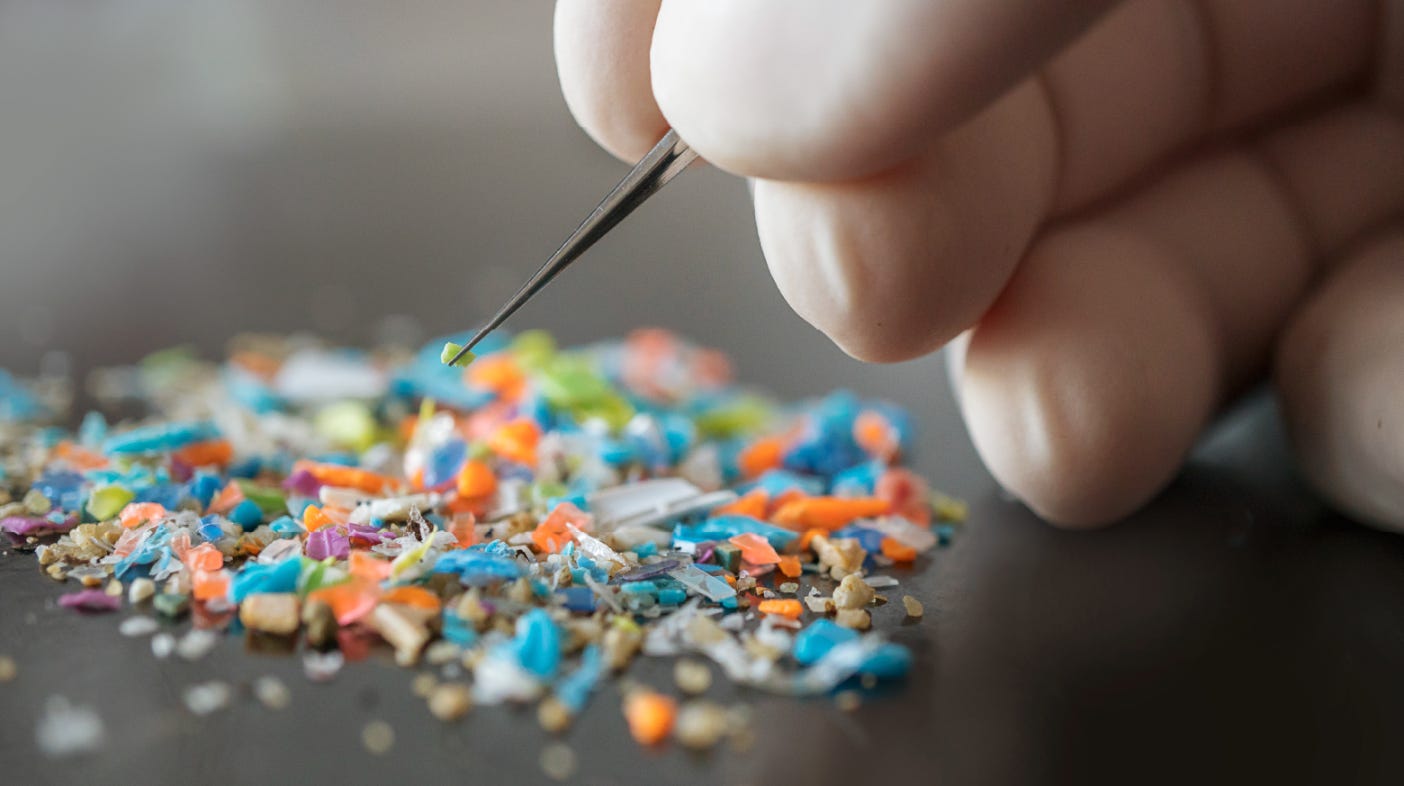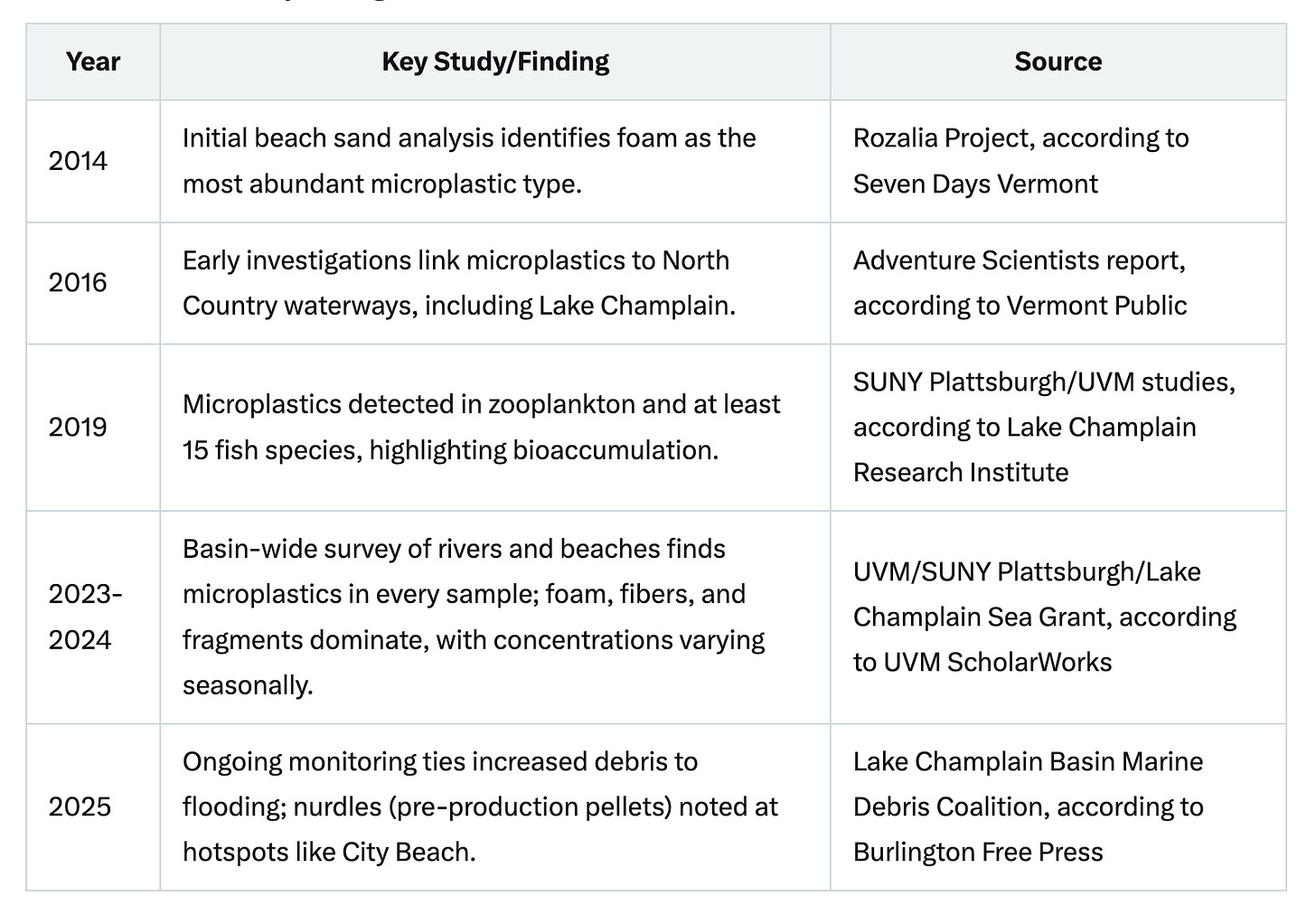Microplastics in Lake Champlain Lag Behind Oceans and Great Lakes, Yet Vermont Floods Heighten Worries
In Lake Champlain, untreated wastewater and atmospheric deposition add fibers from clothing and tire wear—sources often overlooked as another part of the problem.
On a crisp morning of July 16, 2025, a group of journalists boarded the University of Vermont's research vessel, the Marcelle Melosira, for a firsthand look at an invisible threat lurking in Lake Champlain's waters. As the boat sliced through the lake, researchers scooped up samples of foam fragments, colorful plastic pellets, and tiny fibers—microplastics that have infiltrated this vital freshwater body, which supplies drinking water to over 200,000 people and supports a multibillion-dollar tourism and fishing economy, according to the Lake Champlain Basin Program.
"We're seeing these particles in every beach and tributary we've tested," said Julie Silverman, a researcher from SUNY Plattsburgh, highlighting how everyday items like takeout containers and synthetic clothing shed these pollutants into the ecosystem, according to WCAX news reports.
For locals like anglers and beachgoers, the implications hit close to home: these microplastics are ingested by fish and wildlife, potentially ending up on dinner plates or in tap water, raising questions about long-term health effects.This event, organized by a coalition including Lake Champlain Sea Grant, the University of Vermont (UVM), and SUNY Plattsburgh, aimed to spotlight ongoing research into marine debris, according to WAMC Northeast Public Radio.
But as scientists warn of widespread contamination, a broader debate emerges: How severe is the threat, and what balanced actions can mitigate it without overburdening industries or economies?
Historical and Scientific Context: A Decade of Discovery
Microplastics— particles smaller than 5 millimeters—have been a concern in Lake Champlain since early studies flagged their presence over a decade ago. Research has evolved from initial beach surveys to comprehensive basin-wide monitoring, revealing a persistent problem exacerbated by recent floods and land-based sources.
Here's a timeline of key findings:
Data from these studies show most particles measure 1-2.83 mm, with foam comprising the majority on beaches—often from uncontained Styrofoam docks, buoys, and packaging, according to UVM researchers via MyNBC5. Compared to the Great Lakes or oceans, Lake Champlain remains relatively clean, but its 8,234-square-mile basin funnels land-based pollution via rivers, amplified by climate-driven events like the 2023-2025 floods, according to the Lake Champlain Basin Program.
Balanced Viewpoints: From Alarm to Skepticism
Stakeholders offer varied perspectives on the issue. Environmental advocates like those from the Conservation Law Foundation emphasize urgency. "Flooding is dislodging massive amounts of debris, including toxic foam that breaks down into microplastics," noted Rachael Miller of the Rozalia Project during the July 16 event, according to Seven Days Vermont. Researchers echo this, with UVM's Anne Jefferson stressing the need for baselines to track sources: "We can't fix what we don't measure," according to Vermont Public.
Industry voices, such as representatives from the Vermont Boat and Marine Association, acknowledge the problem but highlight compliance efforts. Mike O’Brien, a marina operator, supports alternatives like encased foam or air-filled flotation for docks, noting that Vermont's recent regulations have spurred innovation without crippling businesses, according to WCAX. However, broader plastic industry responses to microplastic regulations have been mixed, with some arguing that bans overlook economic impacts on manufacturing and recycling sectors, according to Ocean Conservancy reports.
Skeptics question the hype around health risks. In a 2020 debate, environmental scientist G. Allen Burton argued that while microplastics are ubiquitous, evidence of direct harm to humans remains limited, with risks potentially "overrated" compared to other pollutants like heavy metals, according to NEIWPCC emerging contaminants resources. Recent reviews echo this, noting that while associations exist with issues like inflammation or endocrine disruption, causation is not definitively proven, and more long-term studies are needed, according to EPA fiscal year justifications. "We're inhaling and ingesting particles daily, but the body may excrete most without issue," one expert suggested in ongoing discussions, according to NOAA Sea Grant.
Impacts and Risks: Environmental, Health, and Economic Toll
Environmentally, microplastics disrupt Lake Champlain's ecosystem, where they've been found in zooplankton, fish like lake trout, and birds, leading to starvation or reduced reproduction, according to SUNY Plattsburgh research via YouTube presentations.
They also adsorb toxins, magnifying pollution from phosphorus runoff that fuels harmful algal blooms, according to UVM blog posts.Human health links are emerging but debated.
Americans ingest over 70,000 particles annually via food, water, and air, with polystyrene potentially carcinogenic, according to Epic Water Filters reports. Studies associate exposure with oxidative stress, cancer, reproductive issues, and cardiovascular disease, though skeptics call for more evidence on low-level effects, according to NEIWPCC.
In Lake Champlain, untreated wastewater and atmospheric deposition add fibers from clothing and tire wear—sources often overlooked, according to Burlington Free Press.
Economically, the lake's $4 billion annual value in tourism and fishing is at stake. "Persistent pollution could deter visitors and harm fisheries," warns the Lake Champlain Basin Program, according to their Opportunities for Action plan.
Solutions and Hope: Policies, Innovations, and Citizen Action
Progress is underway. Vermont's 2024 Flood Safety Act (Act 121) bans the sale and repair of uncontained Styrofoam docks starting in 2024, phasing out a major foam source to prevent fragmentation, according to WCAX. Since the state's 2020 single-use plastics ban, items like bags have plummeted in waterways, according to Ocean Conservancy. Federal efforts, including a proposed $55 million reauthorization of the Lake Champlain Basin Program, could fund advanced monitoring and cleanups, according to Congress.gov bill texts.
Innovations include wastewater filters, eco-friendly clothing, and apps like the "Debris Tracker" for citizen reporting, according to Seven Days Vermont. Community initiatives, such as shoreline cleanups at 150 sites and art projects from collected debris, foster engagement, according to UVM ScholarWorks. "Individual actions—like using reusables and washing synthetics less—add up," Silverman advises, according to Vermont Public.
As research continues, the story of microplastics in Lake Champlain underscores a global challenge: balancing environmental protection with practical realities.



